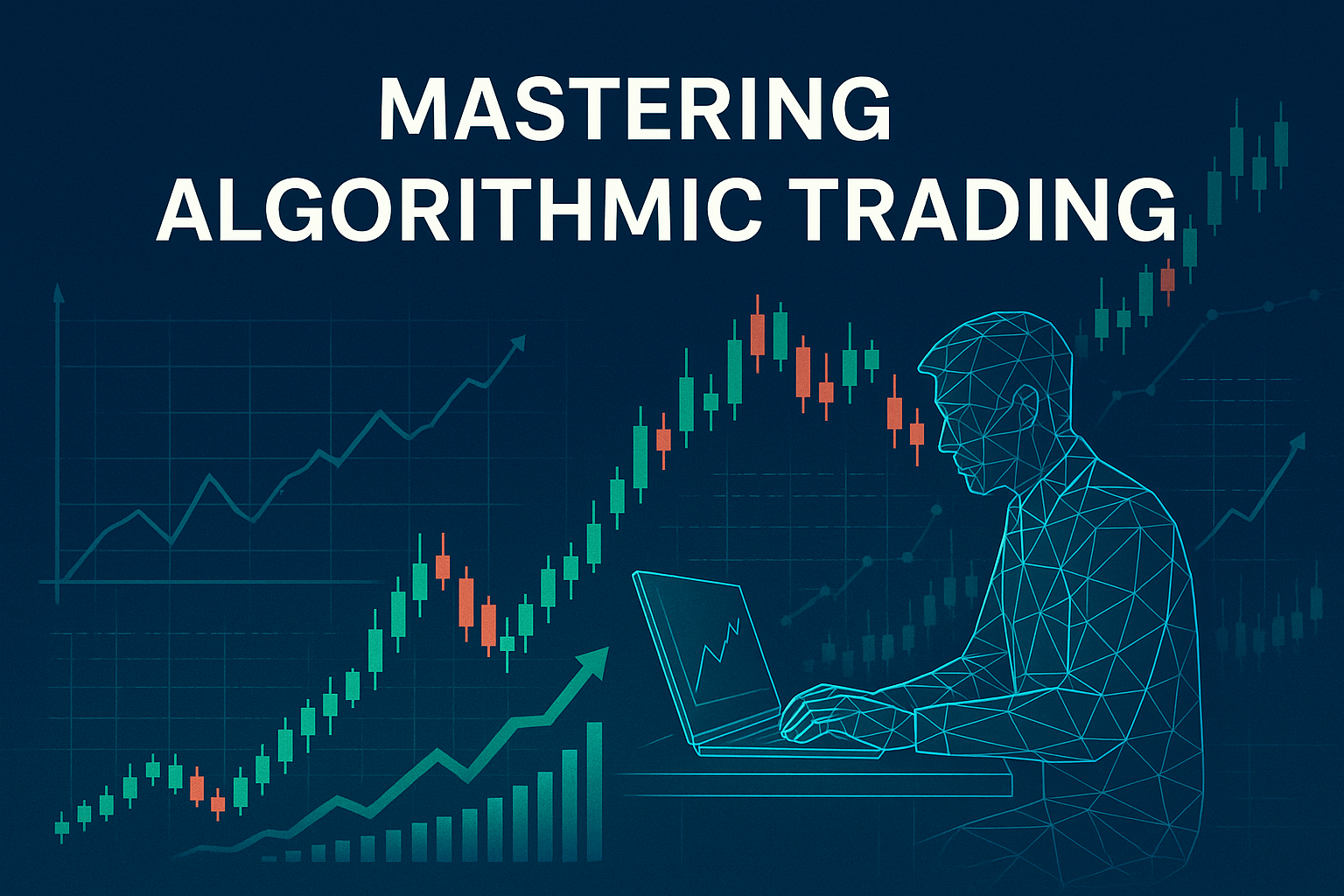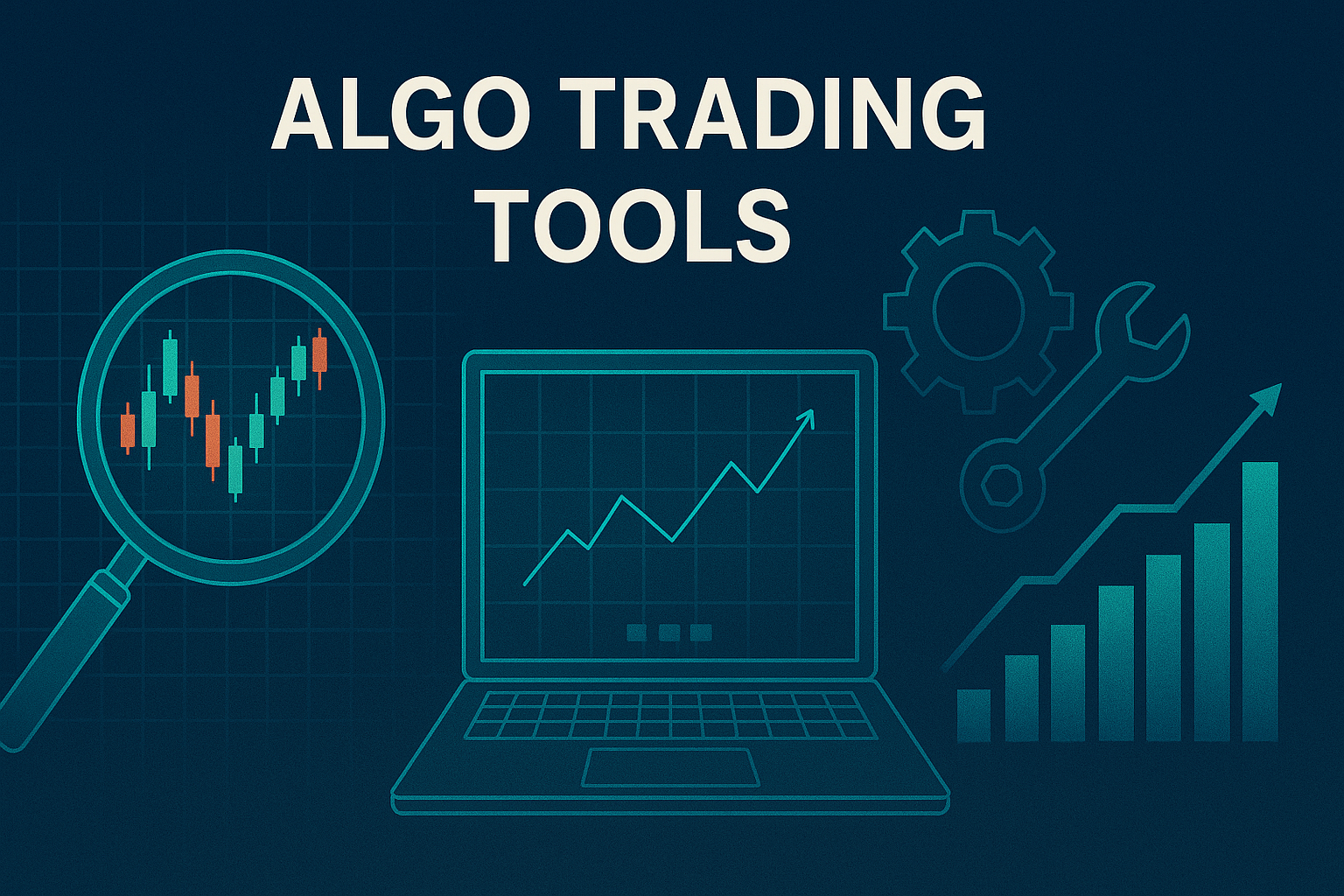In today’s fast-paced financial markets, mastering algorithmic trading has become an essential skill for traders and investors seeking to gain a competitive edge.
This comprehensive guide aims to demystify the world of automated trading, offering a step-by-step approach to developing profitable trading strategies that can be tailored to your unique goals.
By exploring the intricacies of market analysis, quantitative trading, and the dynamics of forex trading, we will equip you with the tools needed to harness the power of technology in your investment endeavors.
Whether you’re a seasoned financial analyst or a small business owner new to the market, our expert insights and actionable advice will empower you to navigate the complexities of algorithmic trading with confidence.
Join us as we delve into the strategies that can transform your trading approach and elevate your portfolio’s potential.
NOTE: Get your FREE Algorithmic Trading Strategies PDF Guide Below.
Table of Contents
Understanding Algorithmic Trading
Algorithmic trading forms the backbone of modern financial markets. This section explores the fundamentals of automated trading systems, their benefits, and dispels common misconceptions.
What is Algorithmic Trading?
Algorithmic trading, often called algo trading, is the use of computer programs to execute trading strategies automatically. These algorithms analyze market data, make decisions, and place trades at speeds and frequencies impossible for human traders.
The core of algorithmic trading lies in its ability to process vast amounts of data quickly and objectively. By removing human emotion from trading decisions, these systems can capitalize on market inefficiencies and execute trades with precision timing.
Algo trading strategies range from simple arbitrage to complex machine learning models. They can be designed for various purposes, including market making, trend following, and statistical arbitrage.
Key Benefits of Automated Trading
Automated trading systems offer several advantages over traditional manual trading methods:
-
Speed and Efficiency: Algorithms can analyze multiple markets simultaneously and execute trades in milliseconds.
-
Reduced Emotional Impact: By following pre-set rules, automated systems eliminate emotional decision-making.
-
Backtesting Capabilities: Strategies can be tested on historical data before risking real capital.
These systems also provide consistent execution, minimizing errors that can occur due to manual input. They allow for 24/7 market monitoring, essential in global markets like forex.
Additionally, automated trading can lead to reduced transaction costs through optimized trade execution and the ability to take advantage of small price movements.
Common Myths Debunked
Despite its prevalence, algorithmic trading is often misunderstood. Let’s address some common myths:
Myth 1: Algo trading is only for large institutions.
Reality: With advancements in technology, algo trading is now accessible to individual traders and small businesses.
Myth 2: Algorithmic trading always beats human traders.
Reality: While algorithms excel in certain areas, they can’t adapt to unexpected events as quickly as humans.
Myth 3: Once set up, algo trading systems require no human oversight.
Reality: Successful algo trading requires ongoing monitoring, adjustment, and risk management.
Building Effective Trading Strategies
Developing robust trading strategies is crucial for success in algorithmic trading. This section covers the fundamentals of strategy creation, essential analytical tools, and real-world examples of profitable trading approaches.
Basics of Trading Strategies
A trading strategy is a set of rules that define entry, exit, and money management decisions for trading activities. Effective strategies are built on solid market understanding and clear objectives.
Key components of a trading strategy include:
-
Entry and exit rules
-
Risk management parameters
-
Time frame considerations
Successful strategies often combine multiple indicators or factors to generate trading signals. They should be adaptable to changing market conditions while maintaining consistent performance.
It’s crucial to align your strategy with your risk tolerance and investment goals. Remember, no strategy works in all market conditions, so diversification is key.
Essential Tools for Market Analysis
Market analysis forms the foundation of any trading strategy. Here are some indispensable tools for algorithmic traders:
-
Technical Analysis Software: Platforms like TradingView or MetaTrader for chart analysis and indicator development.
-
Backtesting Engines: Tools like Backtrader or QuantConnect to test strategies on historical data.
-
Data Feeds: High-quality, real-time market data from providers like Alpha Vantage or IEX Cloud.
These tools enable traders to identify patterns, test hypotheses, and refine strategies before deploying them in live markets. Advanced analytics platforms can also incorporate machine learning algorithms for predictive modeling.
Remember, while these tools are powerful, their effectiveness depends on the trader’s skill in interpreting results and applying insights judiciously.
Case Studies in Profitable Trading
Let’s examine two case studies of successful algorithmic trading strategies:
Case Study 1: Momentum Trading in Forex
-
Strategy: Buy currencies showing strong upward momentum, sell those with downward momentum
-
Key Indicators: Moving Average Convergence Divergence (MACD), Relative Strength Index (RSI)
-
Results: 15% annual return with a Sharpe ratio of 1.8
Case Study 2: Statistical Arbitrage in Equities
-
Strategy: Exploit temporary price discrepancies between related stocks
-
Technique: Pairs trading using cointegration analysis
-
Outcome: 12% annual return with low correlation to market movements
These examples demonstrate how different approaches can yield profitable results when implemented effectively. The key takeaway is the importance of rigorous testing and continuous refinement of strategies.
Incorporating Quantitative Techniques
Quantitative techniques form the core of advanced algorithmic trading. This section introduces the concept of quantitative trading and explores data-driven strategy development and advanced analytical methods.
Introduction to Quantitative Trading
Quantitative trading, often referred to as “quant trading,” applies mathematical and statistical models to financial markets. It leverages complex algorithms to identify trading opportunities based on data analysis rather than traditional fundamental or technical analysis.
Key aspects of quantitative trading include:
-
Mathematical modeling of market behavior
-
Statistical analysis of large datasets
-
Development of complex trading algorithms
Quant traders often have backgrounds in fields like mathematics, physics, or computer science. They use their analytical skills to uncover patterns and relationships in market data that may not be apparent through traditional analysis methods.
The rise of big data and machine learning has further enhanced the capabilities of quantitative trading, allowing for more sophisticated pattern recognition and predictive modeling.
Data-Driven Strategy Development
Developing data-driven strategies is a cornerstone of quantitative trading. This process involves:
-
Data Collection: Gathering relevant market data, economic indicators, and other pertinent information.
-
Data Cleaning: Ensuring data quality and consistency for accurate analysis.
-
Feature Engineering: Creating meaningful variables from raw data.
-
Model Development: Building statistical or machine learning models to generate trading signals.
-
Backtesting and Validation: Rigorously testing the strategy on historical data.
Successful data-driven strategies often incorporate multiple data sources and use advanced statistical techniques to uncover hidden relationships. They may also adapt in real-time to changing market conditions.
It’s crucial to be aware of potential pitfalls like overfitting, where a model performs well on historical data but fails in live trading. Robust validation techniques are essential to ensure strategy reliability.
Advanced Analytical Techniques
Quantitative traders employ a range of sophisticated analytical methods:
-
Time Series Analysis: Techniques like ARIMA models for forecasting price movements.
-
Machine Learning: Algorithms such as neural networks or support vector machines for pattern recognition.
-
Natural Language Processing: Analyzing news and social media sentiment for trading signals.
These advanced techniques allow traders to process vast amounts of data and identify complex patterns that may not be visible through traditional analysis. However, they require significant computational resources and expertise to implement effectively.
It’s important to balance the complexity of these methods with interpretability and practical applicability. The most sophisticated model is not always the most profitable in real-world trading scenarios.
Exploring Forex Trading Dynamics
The foreign exchange (forex) market offers unique opportunities for algorithmic traders. This section delves into the fundamentals of forex trading, the application of algorithms in this market, and practical examples of forex trading strategies.
Fundamentals of Forex Trading
Forex trading involves the buying and selling of currencies in the global foreign exchange market. This market is the largest and most liquid financial market in the world, with daily trading volumes exceeding $6 trillion.
Key characteristics of forex trading include:
-
24-hour market operation (5 days a week)
-
High liquidity and low transaction costs
-
Ability to trade on margin
-
Influence of geopolitical events and economic indicators
Forex traders deal with currency pairs, such as EUR/USD or GBP/JPY. The goal is to profit from changes in the relative value of these currencies. Understanding factors like interest rates, economic policies, and global trade dynamics is crucial for successful forex trading.
Risk management is particularly important in forex due to the use of leverage, which can amplify both gains and losses.
Algorithmic Trading in Forex Markets
Algorithmic trading has become increasingly prevalent in the forex market due to its 24-hour nature and high liquidity. Forex algorithms can:
-
Monitor multiple currency pairs simultaneously
-
Execute trades based on predefined criteria
-
Capitalize on small price movements across different time frames
Common types of forex algorithms include:
-
Trend-following strategies
-
Mean reversion models
-
Arbitrage algorithms
-
News-based trading systems
These algorithms often incorporate technical indicators, economic data releases, and even sentiment analysis from news sources. The high-frequency nature of forex trading makes it particularly suitable for algorithmic approaches.
However, forex algorithms must be robust enough to handle sudden market volatility, especially during major economic announcements or geopolitical events.
Real-world Forex Trading Examples
Let’s examine two real-world examples of algorithmic forex trading strategies:
Example 1: Trend-Following Strategy
-
Algorithm monitors multiple timeframes for trend confirmation
-
Uses Moving Average Convergence Divergence (MACD) and Relative Strength Index (RSI)
-
Enters trades when short-term and long-term trends align
-
Results: 18% annual return with a maximum drawdown of 12%
Example 2: News-Based Scalping Strategy
-
Analyzes economic news releases in real-time
-
Places short-term trades based on market reaction to news
-
Utilizes tight stop-loss and take-profit levels
-
Outcome: 22% annual return with high Sharpe ratio, but requires sophisticated infrastructure
These examples illustrate the diversity of approaches in forex algorithmic trading. Success often depends on a combination of solid strategy design, efficient execution, and effective risk management.
Optimizing and Monitoring Performance
Continuous optimization and vigilant monitoring are crucial for maintaining the effectiveness of algorithmic trading strategies. This section covers performance measurement, improvement techniques, and essential risk management practices.
Measuring Strategy Success
Evaluating the performance of trading strategies is essential for long-term success in algorithmic trading. Key performance metrics include:
-
Return on Investment (ROI): The overall profitability of the strategy.
-
Sharpe Ratio: Measures risk-adjusted return, indicating how much excess return is generated for each unit of risk.
-
Maximum Drawdown: The largest peak-to-trough decline, indicating downside risk.
-
Win Rate: The percentage of trades that result in a profit.
It’s important to assess these metrics over different time frames and market conditions. A strategy that performs well in bull markets may struggle during periods of high volatility.
Visualization tools like equity curves and drawdown charts can provide valuable insights into strategy performance. Regular performance reviews help identify areas for improvement and ensure the strategy remains aligned with overall investment goals.
Continuous Improvement Techniques
Algorithmic trading strategies require ongoing refinement to maintain their edge in ever-changing markets. Some effective improvement techniques include:
-
Parameter Optimization: Fine-tuning strategy parameters using methods like walk-forward optimization.
-
Adaptive Algorithms: Implementing machine learning techniques to allow strategies to adapt to changing market conditions.
-
Ensemble Methods: Combining multiple strategies to create a more robust overall approach.
“The key to successful algorithmic trading is not just building a good strategy, but continuously evolving it.” – Dr. Ernest Chan, Quantitative Trader
Regular backtesting on recent data helps ensure that strategies remain effective. It’s also crucial to monitor live trading performance closely and compare it with backtested results to identify any discrepancies.
Remember, over-optimization can lead to curve-fitting, where a strategy performs well on historical data but fails in live trading. Always validate improvements on out-of-sample data.
Risk Management Essentials
Effective risk management is crucial for the long-term success of any trading strategy. Key risk management practices include:
-
Position Sizing: Limiting the size of individual trades to manage overall portfolio risk.
-
Stop-Loss Orders: Automatically closing trades when losses reach a predetermined level.
-
Diversification: Spreading risk across multiple strategies, assets, or time frames.
-
Stress Testing: Evaluating strategy performance under extreme market conditions.
It’s essential to have a clear risk management plan that outlines:
-
Maximum allowable drawdown
-
Daily loss limits
-
Criteria for pausing or stopping the algorithm
Regular risk assessments help identify potential vulnerabilities in the trading system. This might include analyzing the impact of sudden market shocks or evaluating the strategy’s performance during historical crisis periods.
Remember, no strategy is without risk. The goal of risk management is not to eliminate risk entirely, but to ensure that potential losses are within acceptable limits and don’t jeopardize overall trading capital.
NOTE: Get your FREE Algorithmic Trading Strategies PDF Guide Below.


